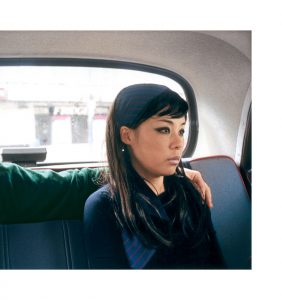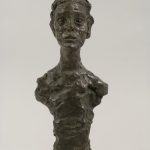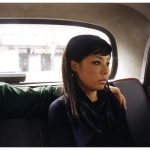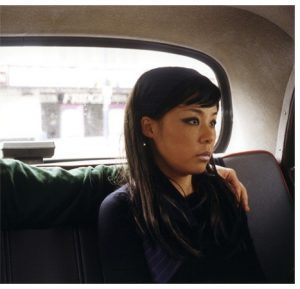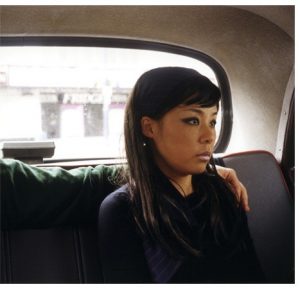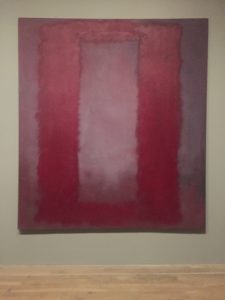Nikki. S. Lee Part 14 2002
This photograph consists of a lady who could be sat in the back of a taxi with what appears to be her partner, however the viewer is only granted access to the arm of this individual which is placed stiffly over her shoulder. This is because the second person sat on the backseat has been cropped out of the photograph, all that is visible is their hand and the green long-sleeved shirt they are wearing. With the intense light streaming from the back window it becomes full of shadows and adds a gloomy appearance overall, the only key focal points seem to be her face and the partner’s hand.
I believe this piece of photography is aiming to show the relationship of this couple, although they are physically connected the expression on her face speaks of emotional detachment. She shows no signs of reciprocating the gesture and her body language looks incredibly unresponsive to their touch. If you look at the shoulder nearest to the partner it almost seems as though she is turning her body away from them.
From the series named ‘Parts’ the artist appears in scenes showing herself with her partner but physically removes them from the photograph. She aims to show ‘intimate details of a relationship’ and it is quoted that whilst being interviewed Lee stated ‘the purpose of the cut is to make people curious about the missing person and to think how his identity has affected the woman who is left behind. It forces people to examine the relationship itself, even if it is only part of the story’. As a viewer I agree that you begin to make up your own narrative in your head as you study the photograph, more hints begin to arise as you scrutinize the work more carefully.
https://nmwa.org/blog/2013/11/01/fluid-identities-the-parts-and-projects-of-nikki-lee/
http://www.realityandretrospect.com/blog/2013/11/6/contemporary-artist-nikki-lee-on-nmwas-blog

